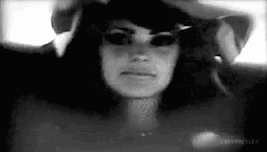Semiotics: blog tasks
Part 1: English by Tarun Thind analysis
1) What meanings are the audience encouraged to take about the two main characters from the opening of the film?During the opening of the film, 2 young characters are presented as hoodlums and antisocial young teenagers. This is seen through their clothing which is quite dark and very casual. One character also wears a cap, a typical accessory associated with teenagers. One of the characters is black, so some racism and prejudice ideas held by British society may influence the audiences idea of him.
2) How does the end of the film emphasise de Saussure’s belief that signs are polysemic – open to interpretation or more than one meaning?
The film primarily makes you believe that the 2 main characters are antisocial and delinquents. This is supported by the fact that they are seen robbing and harassing an old man. The British public view the elderly as kind and think they should be respected so the main characters behaviour go against the norms and views of society. When the main characters return back to the old man and present brand new bananas, the audiences opinion change as they've done something good. Its revealed at the end that the main character is deaf, which is why the film is quite silent. At the start, the MC walks into the road and is shouted at. The audience may assume that he is entitled and doesn't care about his surroundings. However once we learn that he is in fact deaf, we realise its not entirely his fault since he couldn't hear the car.
Part 2: Media Magazine theory drop - Semiotics
1) What did Ferdinand de Saussure suggest are the two parts that make up a sign?
Signifier and Signified
2) What does ‘polysemy’ mean?
When a signifier can have multiple meanings.
3) What does Barthes mean when he suggests signs can become ‘naturalised’?
Certain meanings become accepted by society and agreed upon.
4) What are Barthes’ 5 narrative codes?
Hermeneutic code or ‘enigma code’
5) How does the writer suggest Russian Doll (Netflix) uses narrative codes?
The title acts as a symbolic code here. The symbol of the Russian doll helps us (eventually) to make sense of the narrative.
Part 3: Icons, indexes and symbols
1) Find two examples for each: icon, index and symbol. Provide images or links.
Icon:
1) Find two examples for each: icon, index and symbol. Provide images or links.
Icon:
2) Why are icons and indexes so important in media texts?
They convey meanings for the audience to recognise and understand.
3) Why might global brands try and avoid symbols in their advertising and marketing?
People may start to associate them with other things that aren’t ideal
4) Find an example of a media text (e.g. advert) where the producer has accidentally communicated the wrong meaning using icons, indexes or symbols. Why did the media product fail? (This web feature on bad ads and marketing fails provides some compelling examples).
3) Why might global brands try and avoid symbols in their advertising and marketing?
People may start to associate them with other things that aren’t ideal
4) Find an example of a media text (e.g. advert) where the producer has accidentally communicated the wrong meaning using icons, indexes or symbols. Why did the media product fail? (This web feature on bad ads and marketing fails provides some compelling examples).
Starbucks made an ad that looked like 9/11
5) Find an example of a media text (e.g. advert) that successfully uses icons or indexes to create a message that can be easily understood across the world.
5) Find an example of a media text (e.g. advert) that successfully uses icons or indexes to create a message that can be easily understood across the world.
Nike just do it campaign.





Comments
Post a Comment